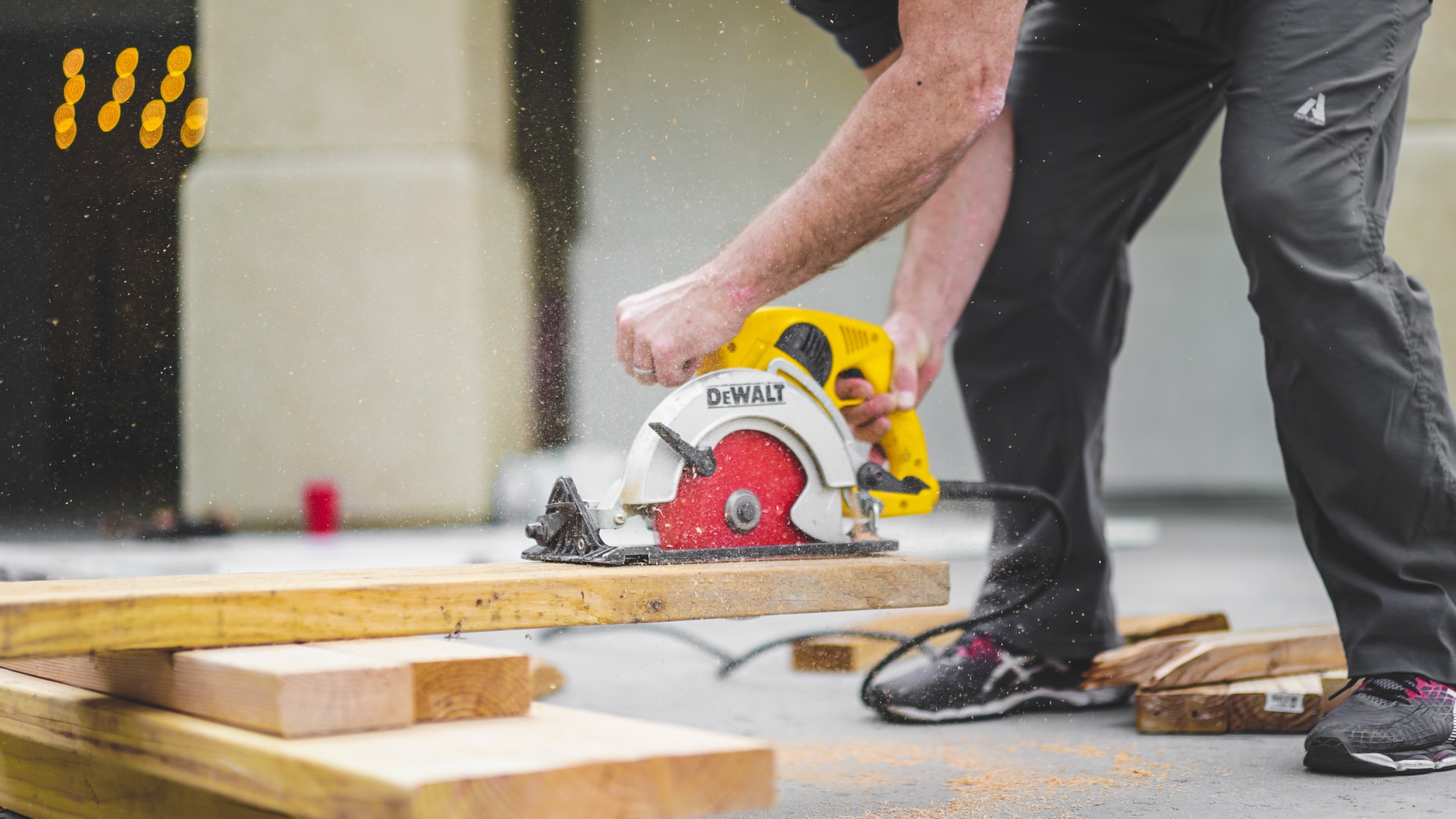There are many different construction methods to choose from, and which one is best for you will be determined by your budget, planning approval, and design criteria.
CONSTRUCTION TYPES
BRICK AND BLOCK BRICK AND BLOCK BRICK AND BLOCK
The walls of modern traditional houses are constructed in two leaves. There is an internal blockwork wall as well as an outward brick or stone wall.
The house’s structure will be supported by these, as well as some internal partitions made of blockwork.
Brick and block construction is one of the most cost-effective options. Because most builders prefer to construct in masonry, they tend to price more competitively, and because many’self-builders’ are in the trade, they have a higher chance of getting better rates from friends or family in the trade than they would from a timber frame business.
Modern brick construction, on the other hand, is more time consuming than frame construction, which may be completed in a matter of days.
 FRAME MADE OF TIMBER
FRAME MADE OF TIMBER
Open-Panel
Timber frame open panel systems are structurally constructed panels made up of studs, rails, sheathing on one face, and a breather membrane that constitute the interior load-bearing leaf of an external wall. The open panel system is constructed from treated softwood timber framing, which is then covered with a structural sheet material such as Ply or OSB board. U-values ranging from 0.26 to 0.15 W/m2K can be achieved depending on the system.
Closed-Panel
Panels with sheathings and/or linings on the faces are formed of studs, rails, and insulation. On the heated side of the insulation, a vapour barrier is included, as well as a breather membrane on the panel’s outer face. For simplicity of installation and assembly, closed panels can additionally contain fitted windows and internal service zone battens. It is possible to achieve U-values as low as 0.10 W/m2K. These solutions are perfect as the foundation of a modern energy efficient home since they offer outstanding thermal and airtightness features.
INSULATED INSULATED INSU (ICF)
Insulating concrete formwork (ICF) or permanently insulated formwork (PIF) is a quick-to-build insulated in-situ concrete system that provides a practical technique of constructing insulated walls for houses.
ICF is a concrete formwork technique made up of hollow lightweight block components that lock together without the use of intermediary bedding materials like mortar. Sheets of insulation materials, usually expanded polystyrene, are connected together using plastic or steel ties, or an integral web of the same insulation is used to make the block.
Once set, the formwork acts as thermal insulation, with u-values ranging from 0.3 w/m2 k (as required by conventional Building Regulations) to 0.11 w/m2 k (perfect for zero energy structures).
CONSTRUCTION WITH A STEEL FRAME
Steel construction has long been popular in the United States and South Africa, and it has recently piqued attention in this country. The steel framework is light, sturdy, weatherproof, and easy to install. The steel structure is affixed to the exterior panels, which are subsequently rendered. The majority of the materials are custom-made before being delivered on site, allowing the house to be weatherproofed fast.
PANELS WITH INSULATED STRUCTURE (SIPS)
Traditional timber frame and masonry construction methods are replaced with structural insulated panels (SIPs), which are a cost-effective, environmentally friendly, and labor-saving alternative.
Two sheets of oriented strandboard (OSB) sandwich a thick layer of high-quality foam insulation in a typical panel. The core is commonly expanded polystyrene, which is pumped under pressure between the sheathings to form a ‘autohesive’ bond. As the foam hardens, it chemically combines with the OSB, resulting in a lightweight, ultra-strong panel that doesn’t require any internal studwork.
SIPs are quick to erect (typical house erected in 5-7 days including roof), strong, and energy-efficient (7 times stronger than timber frame, 3 times stronger than brick and block), making them an excellent choice for self-builders – not least because their precise manufacturing simplifies construction on site, lowering the risk of the project falling behind schedule. Structural insulated panels are commonly used in building roofs and exterior walls, but they can also be utilized in floors and interior walls.
Building with SIPs has the long-term benefit of cheaper energy costs, lower energy usage, and lower CO2 emissions. Their lightweight and factory-produced products decrease transportation energy and worksite waste, lowering overall carbon emissions.
CONSTRUCTION BY COB
Building structures out of dirt is a concept that has existed for almost as long as man has been on the planet. The typical English cob substance was clay-based soil mixed with water and straw, with crushed flint or sand added sometimes.
The cob is a simple building material that is extremely enduring, with the oldest standing cob in the UK dating back to the 1200s.
Methodology of Construction
Working in layers, the technique entails creating thick walls and letting each one firm before moving on to the next. After that, the wall might be plastered with clay or lime or left unfinished.
Cob is easy to make, inexpensive, requires little tools other than your hands, and is incredibly eco-friendly. The final product dries nearly as hard as concrete, making it ideal for use as a structural wall. It’s long-lasting, fire-resistant, insulating, and malleable, allowing the walls to take whatever shape you want. The disadvantage is that the construction procedure can be lengthy.
 CONSTRUCTION OF A STRAW BALE
CONSTRUCTION OF A STRAW BALE
Because straw, grass, and reed are inexpensive and readily available, people have built dwellings with them throughout history. However, in the late 1800s on the American prairies, straw bale houses were a necessity because there was no lumber available. With the rise in interest in sustainable housing, straw bale construction is seeing a resurgence.
Straw is an economical and easily renewable medium because it is frequently a farm surplus product and is very cheap (about 40p per bale, or £1.50 delivered). Straw bale houses, when built properly, are fire-resistant, waterproof, and pest-free, with super-insulated walls.
Methods of Construction
Construction of Structural Bales The bales are laid on top of each other in a stretcher or running bond, with long wooden pegs pushed through to link the layers when required to carry load.
INFILL SYSTEM / NON-STRUCTURAL
The bales infill the walls of a timber frame structure, αντιστηριξη, when used as insulation. The walls are rendered with lime in both cases because it can withstand minimal movement in the bales.
The Fundamentals of Construction
Use bales that are uniform in size (about a metre long and half a metre wide), are well attached with two strings, and have few seed heads. Make sure they’re adequately compacted and dense – each bale should weigh between 16 and 30 kilograms – and dry (for obvious reasons, keep them dry while you’re building). Even when the house is built, make sure the center of the bales doesn’t get wet from the top or bottom; but, if the outside gets wet, that’s fine; it’ll dry out naturally.
Maintenance
A properly constructed straw house, erected where there is sufficient drainage, may last for centuries, at least in theory. However, you should definitely use a different roofing material (something more durable) and construct the roof at a steep slope for drainage.
